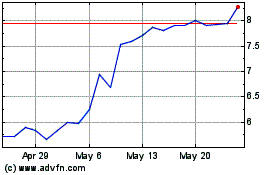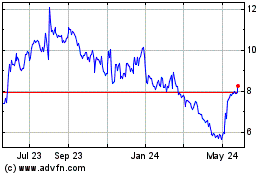Survey results indicate home furnishings brands
need to optimize the customer journey across various touchpoints
and gain insight into what products consumers buy online to
maximize sales and drive growth
BigCommerce (Nasdaq: BIGC), a leading open SaaS, composable
ecommerce platform for fast-growing and established B2C and B2B
brands and retailers, today announced the findings in its latest
consumer report, The Omnichannel Customer Journey: The New Buyer
Experience for Home Furnishings Shoppers. The survey, which
gathered insights from over 3,000 U.S. consumers, highlights the
diverse shopping behaviors that are motivating consumers to
purchase home goods, making it crucial for home furnishings brands
to better understand how and where their customers prefer to
shop.
“Today’s home furnishings shoppers are more informed and
selective than ever, blending in-store and online experiences to
make confident purchase decisions,” said Melissa Dixon, director of
brand and content marketing at BigCommerce. “These findings
highlight the importance of a robust omnichannel strategy, complete
with flexible payment options and highly personalized customer
engagement—key drivers not only for boosting sales but also for
fostering deep, long-term brand loyalty.”
The survey results reflect that a robust omnichannel strategy
that blends both online and in-store shopping is the golden key for
home furnishing brands to meet customer expectations, and remain
competitive and resilient in a quickly evolving market. Meanwhile,
promotions, emerging technology, sustainability and in-store
experiences show potential for fostering long-term brand
loyalty.
Where, What and How Consumers Prefer to Buy
While the pandemic fueled a surge in online shopping, its
aftermath has recovered interest in traditional in-store
experiences, with houseware retailers seeing steady foot traffic
throughout 2023. In fact, 48% of consumers prefer to purchase home
furnishings in-store, while 28% favor online shopping and 24% have
no preference.
Despite the majority favoring in-store purchases, more
respondents prefer to find inspiration for how they furnish their
home digitally, with home improvement shows (48%) and home decor
websites and blogs (47%) more popular than in-store browsing (40%).
However, when it comes to today’s digital touchpoints, social media
(48%) reigns supreme in product discovery, likely because of the
abundance of content available on platforms like Instagram and
TikTok that have the power to inspire viewers.
The report also revealed that 66% of shoppers purchased bedroom
essentials online, followed closely by home décor (56%) and storage
solutions (49%). Online marketplaces and big-box store websites are
also the favored choice for purchasing (54%), with most consumers
opting to buy mid-priced items ($100 – $499) from these channels.
It’s notable that shoppers prefer these channels over a brand’s
direct website (39%). Big-box store promotions or features like
Amazon’s free two-day shipping could drive this preference.
Flexible return policies, such as free pickup services, provide
the reassurance shoppers need to make a purchase. Over 60% of
respondents said they were more likely to purchase from an online
home furnishings brand that offers free return shipping, while no
restocking fees (37%), extended return windows (36%) and return
pickup services (34%) showed to be key factors most likely to
influence an online furnishings purchase.
Buy Online, Pick Up in Store (BOPIS) is No Longer a Perk –
But An Expectation
In the past year, 69% of shoppers have used BOPIS, while 36%
have used BOPIS 2-5 times. A whopping 80% of shoppers reported they
purchased additional items when picking up orders, while a
surprising 31% have never used BOPIS before, giving home
furnishings brands new opportunities to drive more sales and
increase repurchase rates.
Big-ticket items respondents were more likely to purchase using
BNPL are indoor furniture (42%), bedroom essentials (32%), outdoor
furniture (28%) and home decor (26%).
Consumers Using Emerging Technologies Are More Confident in
Their Purchases
While a majority of respondents (42%) have not used emerging
technologies, 27% have used virtual showrooms, 24% tried augmented
reality (AR) 3D displays, and 18% have taken advantage of in-store
virtual reality (VR) installations to interact with, and view,
products. It’s worth noting 47% of consumers reported more
confidence in their purchasing decisions when utilizing these
emerging technologies, indicating that consumers are poised to
start relying on these new tools to inform their purchases as they
become more integral in the shopping experience.
Offering online AR preview placements can help shoppers better
visualize products in their own homes. Similarly, VR tools can
allow shoppers to explore a brand’s offerings through in-store
installations or connecting their headsets to an online virtual
showroom. Brand’s like UPLIFT Desk gives shoppers the ability to
view 3D configurations of their desks in their own homes to help
them feel more comfortable with their purchase.
“When you buy online, you don’t know what the product is going
to look like in your space. As we move into a world with augmented
reality, we’re able to build the tools and products that help a
customer visualize and understand it,” explained Daniel Burrow,
vice president of growth at UPLIFT Desk, a BigCommerce
customer.
Promotions Channels and Types Heavily Influence Where
Consumers Shop
A compelling promotion can often persuade consumers to switch
from their preferred buying method. In fact, 82% of respondents who
prefer in-store purchases will likely buy online when an
online-only promotion is offered. Similarly, 76% of those who favor
online shopping will likely purchase at a physical store if
presented with an in-store-only promotion.
It’s worth noting that fewer online shoppers would switch to
in-store shopping, even with a promotion. This is likely because
many of these shoppers prefer the convenience of being able to
purchase at any time of the day (43%). With 61% of in-store
shoppers and 58% of online shoppers reporting promotions would
attract them to try a different buying method, it would be worth
home furnishing brands to consider prioritizing promotions such as
percentage discounts, BOGO and free gifts with purchase to attract
and retain customers.
Meanwhile, email marketing remains the most effective
promotional channel, with 55% of consumers preferring to receive
promotions via email.
Sustainability Matters, But Not at Any Cost
As more consumers prioritize going green, there is a growing
preference for sustainable products. For instance, while 39% of
respondents look to buy energy-efficient items and 34% look to buy
products with minimal or recycled packaging, the majority of
consumers are not willing to pay more than 10% extra for products
that align with their sustainability preferences. Most are
unwilling to pay any additional cost.
To attract eco-minded shoppers, home furnishings brands should
explore cost-effective ways to incorporate sustainable practices
into their products. Highlighting energy efficiency and
environmentally friendly packaging on product pages and shipping
materials can help differentiate them from competitors. A great
example is Molly Mutt who showcases their commitment to
sustainability through a dedicated page on their ecommerce site,
raising customer awareness of their green initiatives.
For home furnishings businesses to thrive in this challenging
landscape, it’s crucial to understand how their audiences prefer to
shop and what they value in a brand. With this insight, brands can
make strategic adjustments to their business models that
differentiate them from competitors.
BigCommerce works with leading home, garden and furniture
retailers including Chair King Backyard Store, Designerie, Jennifer
Taylor Home, Wovenbyrd and Burrow, who are leveraging these
strategies to elevate their customer shopping experiences and
accelerate growth.
Click here to download the full report and learn how your home
and garden brand can captivate customers with a beautiful
storefront that can help sell more, scale and convert. To see how
leading home, garden and furniture brands are succeeding on the
BigCommerce platform, visit here.
Methodology
BigCommerce conducted a consumer survey in August 2024. There
were 3,007 participants total across the Northeast (792), Southwest
(382), West (316), Southeast (883), and Midwest (634) of the United
States. The survey required all respondents to be 18 or older and
to have purchased at least one home furnishings product online in
the last 12 months.
All data referenced in this report is sourced from BigCommerce’s
consumer survey unless stated otherwise. Unless indicated
differently, the report highlights aggregated data.
About BigCommerce
BigCommerce (Nasdaq: BIGC) is a leading open SaaS and composable
ecommerce platform that empowers brands and retailers of all sizes
to build, innovate and grow their businesses online. BigCommerce
provides its customers sophisticated enterprise-grade
functionality, customization and performance with simplicity and
ease-of-use. Tens of thousands of B2C and B2B companies across 150
countries and numerous industries rely on BigCommerce, including
Burrow, Coldwater Creek, Francesca’s, Harvey Nichols, King Arthur
Baking Co., MKM Building Supplies, United Aqua Group and Uplift
Desk. For more information, please visit www.bigcommerce.com or
follow us on X and LinkedIn.
View source
version on businesswire.com: https://www.businesswire.com/news/home/20241023080092/en/
Dana Marruffo dana.marruffo@bigcommerce.com
BigCommerce (NASDAQ:BIGC)
Historical Stock Chart
From Dec 2024 to Jan 2025

BigCommerce (NASDAQ:BIGC)
Historical Stock Chart
From Jan 2024 to Jan 2025
